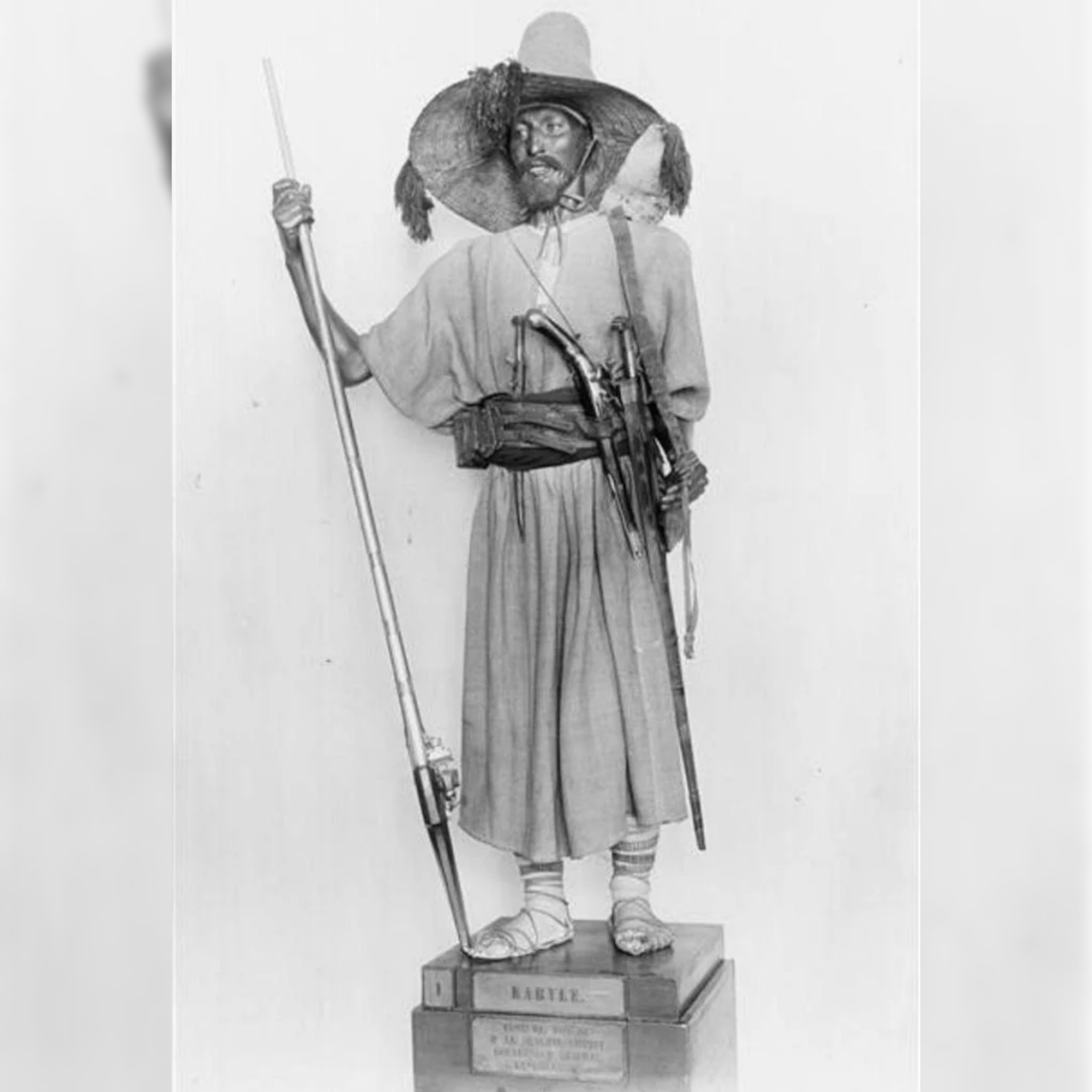A Very Fine Kabyle Flyssa (Flissa) Sword with Sheath
A Very Fine Kabyle Flyssa (Flissa) Sword with Sheath
Iflissen Lebhar Tribal Confederacy
Kabylia, French Algeria (Algeria)
Last half 19th century (ca. 1870)
Steel, wood, brass, iron
Blade: 96,5cm
Hilt & Blade: 108,2cm
Hilt, Blade, Sheath: 108,9cm
Collection Date: 2024
Collection Number: 387
The flissa is the traditional weapon of the Iflissen Kabyles, an ethnic Berber group originating from the Atlas Mountain Range in Northern Algeria. Their weapons range from small knives to very long swords, most of which are very consistent in design using brass inlays and geometric motifs.
This example is the sword version with a longer length than the average at 108,9cm. Its quality can be seen in the crisp details and fine workmanship. The straight single- edged steel blade is elongated with a slight outward curve, then recurving into an acute sharp point. Traditional geometric brass inlays and motifs are inlaid for the first three- quarters of the blade, as well as fanciful scrollwork on the spine before turning into a zig-zag pattern (snake). The last 1/4 length of blade has a false edge.
The handle is carved from wood in the form of an animal head (camel, dog, bird, chimara) covered in brass repoussé scrollwork and linear designs. Steel bolster with inlaid brass. The sheath is composed of two elaborately carved slabs of wood held together by iron bands ending in an iron chape. One of the finer flyssa swords with very well executed crafsmanship, crisp in detail, and very long proportions for the type. Excellent condition, complete with sheath, which is often lost or damaged.
Photograph 11: Mannequin of a Kabyle warrior in full kit. Ca. 1830.
Photograph 12: Kabyle Warrior with Musket and Flyssa, 1842 -1846. By Jules Alfred Vincent Rigo.
Photograph 13: Kabyle Warrior with Musket and Flyssa. 19th century.
[1] Claude, Eric. 2020. “The Small Catalog of Moroccan and Algerian Edged Weapons”. Pages 146 – 173
[2] Hales, Robert. 2013. "Islamic and Oriental Arms and Armour". Page 240: No. 592
[3] Pinchot, Oliver S. 2014. “Arms of the Paladins” Page 81. Cat. 4-56
[4] Spring, Christopher. 1993. “African Arms and Armor”. Pages 21-24
[5] Tirri, Anthony C. 2003. “Islamic Weapons Maghrib to Moghul”. Page 25. Figure 8
[6] Tirri, Anthony C. 2007. “Islamic and Native Weapons of Colonial Africa 1800 - 1960”.
[7] https://www.metmuseum.org/art/collection/search/31190
[8] https://www.metmuseum.org/art/collection/search/31188
[9] https://www.britishmuseum.org/collection/object/E_Af-1626-a
[10] https://www.britishmuseum.org/collection/object/E_Af-1626-b
[13] https://oriental-arms.com/product/long-and-heavy-flyssa-sword/
[14] https://oriental-arms.com/product/very-long-and-heavy-flyssa-sword/
[15] http://oriental-arms.co.il/item.php?id=62
[16] http://oriental-arms.co.il/item.php?id=6793
[17] http://oriental-arms.co.il/item.php?id=5868
[18] http://oriental-arms.co.il/item.php?id=1292
[19] https://african-weapons.com/gallery?8-flyssa-mit-scheide-u












